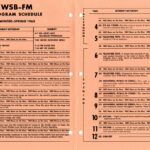Development and Popularization of FM Radio



Edwin H. Armstrong invented FM (Frequency Modulation) in 1928. FM broadcasting produced a superior sound, free from much of the static experienced with AM radio, but it was slow in gaining popularity (and advertising money) because most people only had AM radio receivers. To bridge the gap, the FCC suggested that stations “simulcast,” or play the same thing on their AM and FM stations. (include hyperlink to “How Radio Works” section)
The popularity of FM radio grew in the 1950s and 1960s, as the FCC opened up more channels to broadcasters and FM sets became cheaper and more readily available. Car companies introduced FM car radios in 1963. In 1964, the FCC ordered that FM stations stop simulcasting and create original programming for FM broadcasting.
The first official commercial FM station in Georgia, WRBL-FM (Columbus), began broadcasting in 1946. In 1948, WABE-FM, licensed by the Atlanta Board of Education, became the state’s first public radio station, broadcasting classical music and educational programming. That same year, WSB-FM began regular transmission, simulcasting their programs on AM and FM.